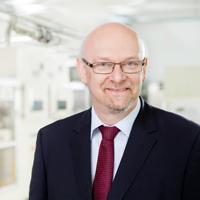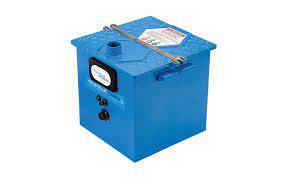Batteries, Batteries, Batteries: Putting the e in eVTOLs
![Before we get eVTOLs navigating the urban skyscape, we need better batteries. [Photo courtesy Riley Farabaugh, Unsplash]](https://aam.today/wp-content/uploads/2021/04/riley-farabaugh-43_JrHZju1A-unsplash-733x550.jpg)
Thomas Edison, he of light bulb, phonograph, and kinetoscope fame was, to say the least, a prolific scientist and inventor. He also had more than a passing interest in batteries. You know, the things we are staking the future of eVTOLs and urban air mobility on.
Industry focus is on lithium-ion (Li-Ion) batteries, but as Professor Dr. Martin Winter, a leading researcher and expert in electrochemical energy technology at MEET Battery Research Center of the University of Münster (Germany), explains, that’s just part of the story.
Meet the Battery Families

Professor Dr. Martin Winter, MEET Battery Research Center of the University of Münster [Photo Courtesy of Forschungszentrum Jülich]
“There are different families of battery chemistries,” Winter explains. For example, nickel cadmium (NiCd) batteries were used to power Sony’s Walkman in the 1970s (now, eclipsed by the ubiquitous iPhone which also uses lithium-ion).
Edison, in fact, Winter says, also patented a nickel iron battery (as did his Swedish competitor, Waldemar Jungner). Edison’s thinking was nickel and iron are plentiful and cheap. Edison was so enamored with nickel iron batteries he patented them.
Nickel iron batteries are relatively high volume in terms of electrical output, but they are too heavy for aviation. Another enterprise, Exide, tried to capitalize on nickel iron in the early to mid-1970s, but they soon learned the inevitable – iron rusts. As the rust increases, the battery’s capacity decreases.
And, they omit gas and bubbles. Without stability, nickel iron batteries proved unsuited for cars, electronics, or aviation.
“Despite lithium-ion’s better suitability for powering eVTOLs,” Winter explains, “NiCd may yet have a future in urban air mobility. Because it can operate at temperatures as low as -50° Celsius (-58° Fahrenheit), NiCd batteries may have applications for things such as emergency exit doors. Whereas lithium ion would be frozen at such a high-altitude atmosphere, NiCd still functions.”
It’s All About Energy Density

Lithium-ion batteries, such as this one from True Blue Power Systems may form the foundation of eVTOL flight. [Photo Courtesy of True Blue Power Systems]
One of the key factors most eVTOL developers have already considered leading to their decision to use lithium-ion batteries: Li-Ion has a relatively high energy density. While nickel-iron comes in at 20-30 watt hours per kilogram, lithium-ion produces 250-300 watt hours per kilogram. The result is less weight and more electric power; a winning combination for vehicles seeking to lift and transport two to five passengers or commercial or military cargo.
Lithium-ion battery cells also deliver 3.6 volts of power, more than three times what a similarly sized nickel-cadmium or nickel-metal hydride battery is capable of producing.
In the 1967 Academy Award-winning film, The Graduate, (in which Dustin Hoffman made his film acting debut), Benjamin (Hoffman’s character) is given one word of advice at his graduation party by a family friend: “Plastics.” If the film were remade today, in addition to being cautioned about “Mrs. Robinson,” young Ben might now be advised a different word: Lithium-ion.
Want to continue to stay up-to-date about the latest developments in the eVTOL industry? Subscribe to AeroCar Journal now. It’s FREE (for a limited time)! Join us on Twitter for the latest news, analysis, and insight about the eVTOL industry. AeroCarJ


